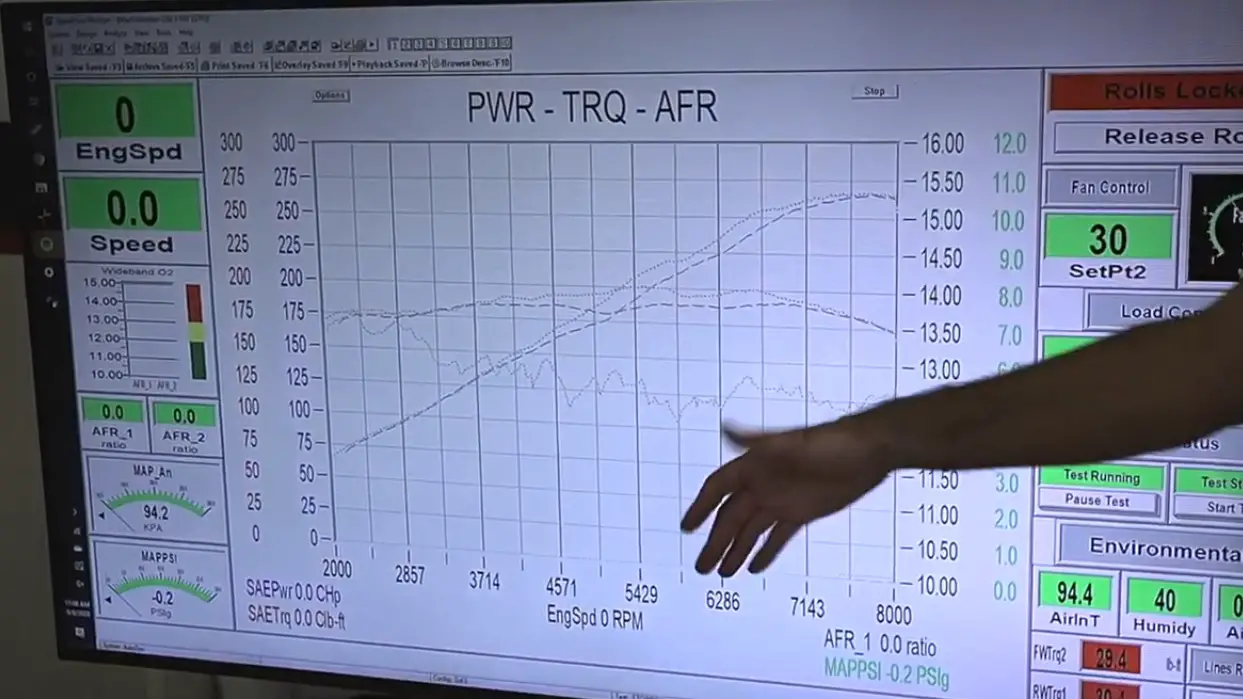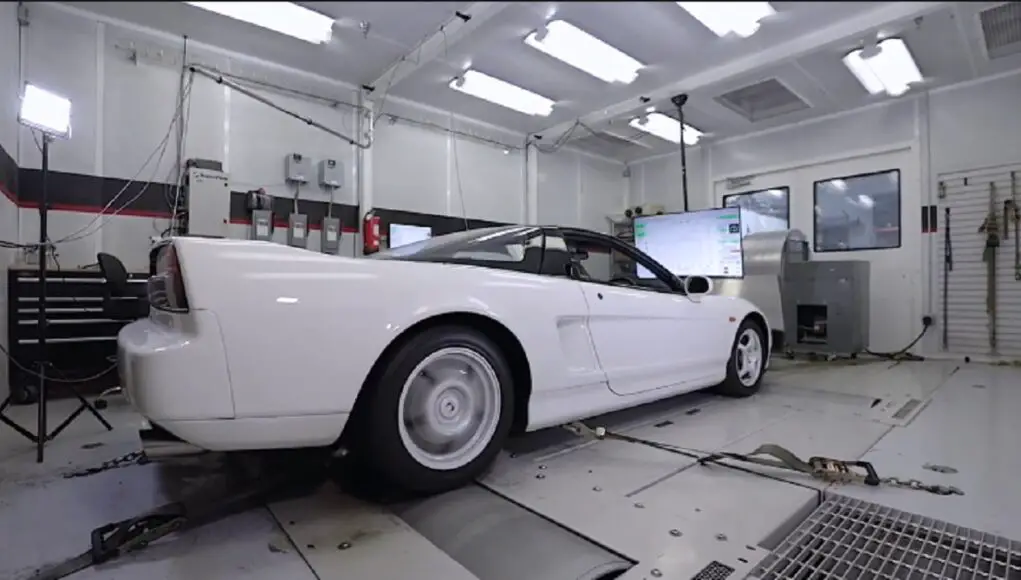Honda blueprinted and balanced all NSX-R engines and Science Of Speed’s dyno proves how much power that adds.
ScienceOfSpeed, Arizona-based parts manufacturer and NSX specialists, had the privilege of working on 1 of 483 Honda NSX-Rs in the world. Thankfully, the owner kindly allowed them to put the NSX-R through its paces on a rolling road to answer definitively, how much extra horsepower does all that racecar engineering add?
The video is more than a dyno run and worth the entire watch. But, if you just want to hear that 3.0L NA VTEC V6 sing to its fuel cutoff, FF to 4:58.
Before we get to the raw numbers, it’d be a disservice not to mention the rich history behind the Honda NSX-R. Simply put, the white exterior and red badge, for the first time, paid homage to the Honda RA272, the first Japanese car to win in Formula One. Type R means race and the first Type R took everything good about the NSX and, as Neal says, “boiled it down to the ultimate NSX driving experience.”
This, my friends, is the progenitor and should be the focal point of all Type Rs (I’m quite zealous about this opinion.)
The tale of the tape
Honda stripped 265 pounds by removing the AC, stereo, powered passenger seat controls, airbags, electric windows, sound deadening, mirror controls, and stuck on bespoke, lighter wheels.
A stiffened front suspension reduced the NSX’s tendency to over-steer during certain driving conditions. A shortened final drive meant quicker acceleration but a lower top speed.
The stock 3.0 liter, DOHC, 24-valve V6 put out 270 HP at 7,100 RPM and 210 lb-ft at 5,300 RPM. Honda racecar engineers then massaged these engines by blueprinting the entire engine and balancing the crankshaft. You can hear how smooth the engine revs during the dyno pull.
This NSX-R has a header upgrade and exhaust, so S.O.S compared it to a similarly equipped NSX. And *drum roll please* here’s a screenshot of the dyno graph. The dotted line is the NSX-Rs run.
The SAE Corrected WHP for an NSX-R with an upgraded exhaust, header, and tune is about 262 HP and 200 lb-ft. Peak numbers are roughly the same as standard NSX.

ScienceOfSpeed concludes that the NSX Type R engine doesn’t make more power compared to the stock 3.0 liter V6. Full stop.
“It seems the NSX-R has the same power as a standard NSX, but hey, I think that’s pretty cool that Honda thought their power plant was so awesome that it could not only be in the NSX-R but also in a standard NSX.“
More than the sum of its parts
Hindsight being 20/20, looking at the facts, I should’ve guessed balancing and blueprinting wouldn’t add power. What it does is realize maximum power and ensures the longest engine life and reliability possible, characteristics you want in a race engine. In a real-world race series with constraints, this is a competitive edge.
That being said, when you tie in the weight savings, suspension setup and a smoother running engine, the NSX-R is arguably the ultimate analog Honda ever made.
Neal sums it up nicely,
“The NSX Type R, I would argue, is the best driving experience of any sports car whether it be 30 years old like this one or something that you could walk into the dealership and buy. This type of driving experience isn’t something that you can just replicate.“




